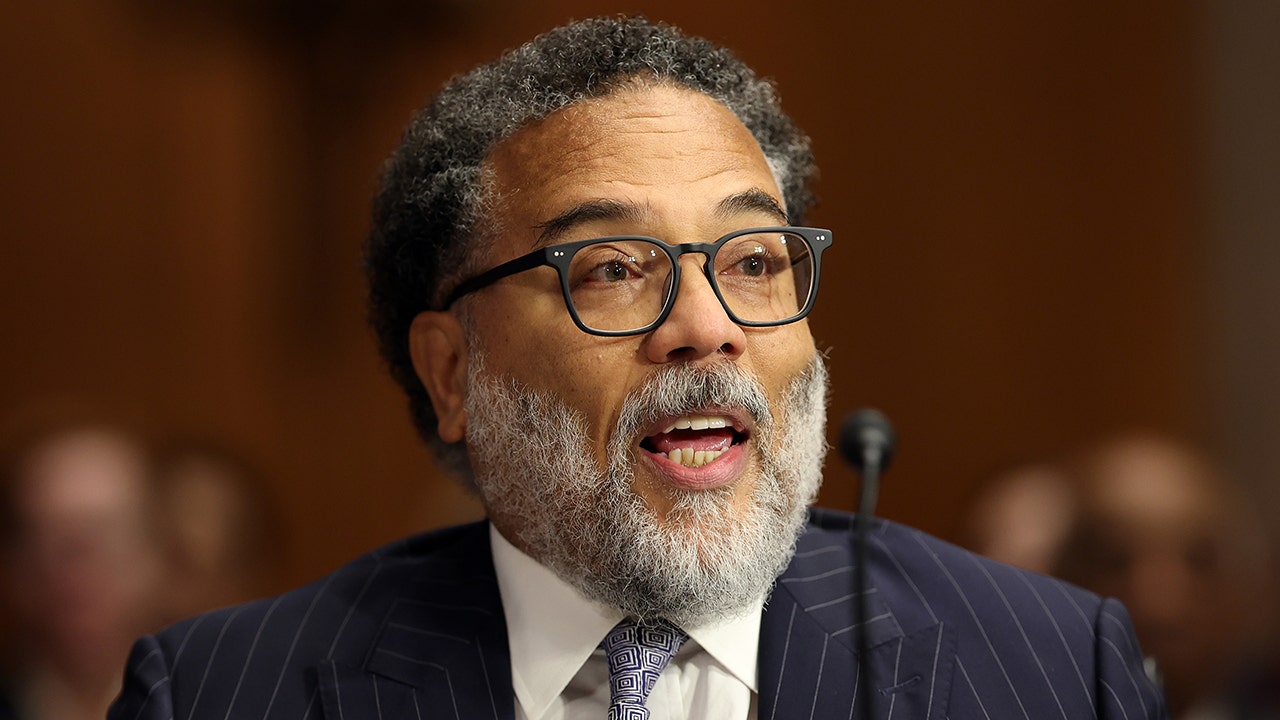Education
The Shortage in School Bus Drivers is Getting Worse

After the first day of school in Louisville, Ky., Patrick Lester could not find his 6-year-old daughter, Adara.
After he waited for 40 minutes at the bus stop, a phone call to the school revealed that she had been put on another bus, Mr. Lester said. But school staff members could not confirm whether she had been dropped off, nor could they reach the driver.
His partner, Heather Gray, left work and drove around the neighborhood, looking for Adara. Finally, she said, she saw a bus driving away from a street corner, and “it’s my daughter standing there.”
“We just moved here — she doesn’t know the neighborhood,” Ms. Gray explained. “And the bus driver had kicked her off and told her to walk home.”
A bus driver shortage that has plagued the country’s school districts for years came to a head in Louisville. After that first chaotic day, the city’s school system, Jefferson County Public Schools, which serves about 100,000 students, abruptly halted classes until at least Friday for elementary and middle school students, and Monday for high school students.
Marty Pollio, the district superintendent, said at a news conference on Monday the district will work to provide bus drivers everything they need for success, including increasing wages.
“We will continue to have more and more problems throughout this nation unless we address our significant bus driver issue,” he said.
While the situation in Louisville seemed extreme, many school districts have been contending with a shortage of bus drivers, driven by low pay,inconvenient hours and lingering effects of the pandemic.
In the Hillsborough County Public Schools district, which includes Tampa, Fla., there are still 203 bus driver vacancies even though school has already begun, with delays on the first two days of school last week, said Tanya Arja, chief of communications for the district.
In Charlottesville, Va., Albemarle County Public Schools notified the families of 1,000 children — total enrollment is 14,000 — that there was not a driver for their route, but school would go on as scheduled. .
Normally, there are up to 6,000 students who are transported a day, but this year the district received requests for 10,000, said Phil Giaramita, public affairs and strategic communications officer for Albemarle Public Schools.
And in Chicago, the school district is battling its driver shortage by offering free Ventra cards — which are used for the city’s public transit —- for qualifying students and one companion. About half of the district’s bus driver positions are vacant.
The search for bus drivers has been frustrating. The Stillwater Public Schools in central Oklahoma still have five full-time positions open, said Barry Fuxa, the district’s public relations and communications coordinator.
Like many districts, low pay and odd hours are the biggest issues. Starting pay last year for Stillwater bus drivers was $12.38 an hour, with six-hour days and morning and afternoon shifts that did not allow enough time for another job.
This year, Mr. Fuxa said, the district raised the salary for its bus drivers to $16.57 an hour. But without an advertising budget for the open positions, it has been difficult to spread the word, especially when competing with nearby school districts.
“You’re kind of tapping into a dry well at a certain point, “ Mr. Fuxa said. “There’s only so much you can do.”
Tomás Fret, president of the Local 1181 chapter of the Amalgamated Transit Union, which covers the New York metro region, said that low wages have been drawbacks, but also that the job has become more difficult, noting that there have been more confrontations with parents and students.
Mr. Fret, who started driving school buses in 1996, said, “When I started the job, workers were able to send their kids to college.”
Erica Groshen, a senior economics adviser at Cornell’s School of Industrial and Labor Relations, said raising pay is the most straightforward way to find more bus drivers, but schools may need to turn to creative solutions.
“Employers want to improve retention,” she said. “Offering a way for the workers to have some voice and interviewing workers as they exit can be a very important way for them to figure out solutions.”
Public school officials at Jefferson County were trying their own creative solution — which helped lead to the opening day fiasco. They had hired AlphaRoute, a Boston-area engineering firm that specializes in routing software, to design new routes for the school year.
The goal, the district said, was to adjust for fewer drivers, but that resulted in longer routes.
“We recognize that the situation was extremely regrettable and likely caused by the significant changes to bus routing which were made necessary by the district’s severe driver shortage,” AlphaRoute said.
The district said it was working to overhaul its routes. As of now, there have not been discussions of changing its contract with AlphaRoute, which they paid $265,000 to design this year’s routes. The district has worked with the company since 2021.
Until school starts again, families must find child care. Mr. Lester said a grandmother has helped watch his children. At home, the children have been kept busy with activity sheets and reading to make sure they were prepared for when classes start.
Starr Martin, another parent in Jefferson County, said she was nervous last week while trying to locate her 9-year-old son, who had been put on the wrong bus.
Ms. Martin said the school board had not thought these changes through.
“There’s going to be hiccups on the first day,” she said, “but I think somebody needs to be held accountable for what happened.”

Education
Video: Several Killed in Wisconsin School Shooting, Including Juvenile Suspect

new video loaded: Several Killed in Wisconsin School Shooting, Including Juvenile Suspect
transcript
transcript
Several Killed in Wisconsin School Shooting, Including Juvenile Suspect
The police responded to a shooting at a private Christian school in Madison, Wis., on Monday.
-
Around 10:57 a.m., our officers were responding to a call of an active shooter at the Abundant Life Christian School here in Madison. When officers arrived, they found multiple victims suffering from gunshot wounds. Officers located a juvenile who they believe was responsible for this deceased in the building. I’m feeling a little dismayed now, so close to Christmas. Every child, every person in that building is a victim and will be a victim forever. These types of trauma don’t just go away.
Recent episodes in Guns & Gun Violence
Education
Video: Biden Apologizes for U.S. Mistreatment of Native American Children

new video loaded: Biden Apologizes for U.S. Mistreatment of Native American Children
transcript
transcript
Biden Apologizes for U.S. Mistreatment of Native American Children
President Biden offered a formal apology on Friday on behalf of the U.S. government for the abuse of Native American children from the early 1800s to the late 1960s.
-
The Federal government has never, never formally apologized for what happened until today. I formally apologize. It’s long, long, long overdue. Quite frankly, there’s no excuse that this apology took 50 years to make. I know no apology can or will make up for what was lost during the darkness of the federal boarding school policy. But today, we’re finally moving forward into the light.
Recent episodes in Politics
Education
Video: Los Angeles Bus Hijacked at Gunpoint

new video loaded: Los Angeles Bus Hijacked at Gunpoint
transcript
transcript
Los Angeles Bus Hijacked at Gunpoint
The person suspected of hijacking a bus which killed one person, was taken into custody after an hourlong pursuit by the Los Angeles Police Department early Wednesday morning.
-
“Get him.”
Recent episodes in Guns & Gun Violence
-

 Business7 days ago
Business7 days agoThese are the top 7 issues facing the struggling restaurant industry in 2025
-

 Culture7 days ago
Culture7 days agoThe 25 worst losses in college football history, including Baylor’s 2024 entry at Colorado
-

 Sports6 days ago
Sports6 days agoThe top out-of-contract players available as free transfers: Kimmich, De Bruyne, Van Dijk…
-

 Politics5 days ago
Politics5 days agoNew Orleans attacker had 'remote detonator' for explosives in French Quarter, Biden says
-

 Politics5 days ago
Politics5 days agoCarter's judicial picks reshaped the federal bench across the country
-

 Politics3 days ago
Politics3 days agoWho Are the Recipients of the Presidential Medal of Freedom?
-

 Health2 days ago
Health2 days agoOzempic ‘microdosing’ is the new weight-loss trend: Should you try it?
-

 World7 days ago
World7 days agoIvory Coast says French troops to leave country after decades














